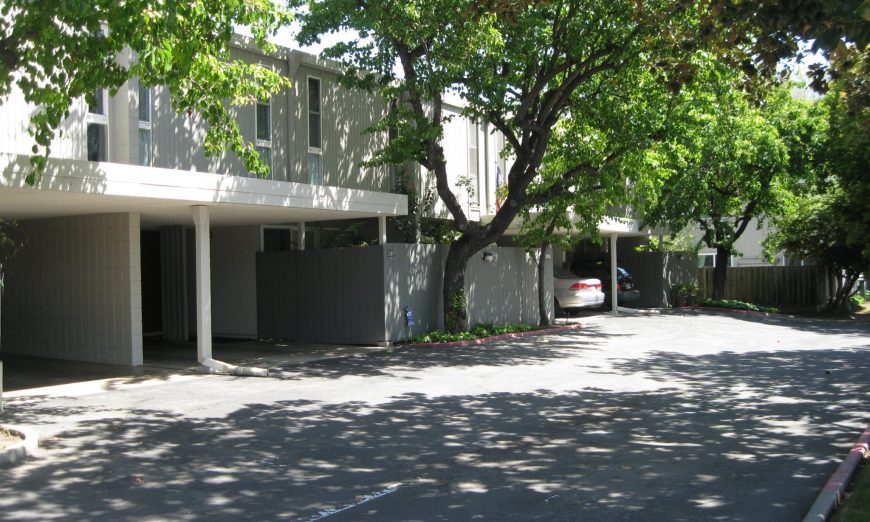Sometimes the best new solutions to old problems are old solutions. Take suburban cluster housing for example, illustrated by Santa Clara’s half-century old Eichler cluster developments, Pomeroy Green and Pomeroy West.
Cluster development was promoted in the 1960s by the American Conservation Association as the answer to problems that still grapple with today—high housing costs, traffic, lack of open space and recreational amenities—but most importantly to the problem that concerned conservationists the most: preserving open space and protecting the natural environment.
“The land was getting more expensive and that created the push to cluster housing,” said Pomeroy Eichler owner and retired Santa Clara public works inspector Ken Kratz. “The American Planning Association advocated for cluster housing to save open space and farmland.”
Whyte laid out the problem and his solution to it in the foundational text on the subject, Cluster Housing. Laurance Rockefeller—dubbed “America’s leading conservationist” by First Lady Ladybird Johnson—wrote the preface to Whyte’s book.
“Suburban development has been squandering the very resources that people have moved out of the city to seek,” he wrote.
“In a land-wasting pattern that has used ten acres to do the work of one, houses on equal space lots have been spattered all over the landscape and the streams and the woods and hills have been ruthlessly obliterated,” he continued
Rockefeller enumerated the benefits of cluster housing in his preface. “By applying the cluster principle, developers can put up the same number of houses but on a portion of the tract with the bulk of the land left for open space and recreation.
“The promise is two-fold,” Rockefeller continued, “not only can the individual subdivisions themselves be far better place to live in; the shift to this pattern opens up tremendous opportunities for local governments to join the separate open spaces into a network that will weave the outdoors into the very heart of the metropolitan areas.”
Look Magazine featured the Pomeroy Eichlers as “the single most significant trend in the way we live” in a 1964 article, Solution for Suburbia. “They use our increasingly expensive and fast-disappearing suburban land sensibly and imaginatively…Close quarter living is spacious and luxurious.”
Social and environmental concerns are integral to the design of cluster homes, Whyte wrote. Site designs integrate rather than obliterate natural features and topography, protecting environmentally sensitive areas of the development and preserving natural features. They minimize runoff pollution by reducing the area of paved surfaces while reducing infrastructure and maintenance costs.
As Whyte put it, “if there is to be any environment worth living in, there must be more efficient use of the land.”
But if cluster developments was such a great idea, why didn’t Eichler develop more of them? One reason is that VHA mortgage program favored single-family homes. Suburban cities at that time also favored conventional tracts of single-family houses. In those years the word “multi-family” was often equated to “tenement.”
To this day, it’s still easy to see the same bias in action despite all the problems created by suburban sprawl—just attend a planning commission meeting in virtually any suburban city—although the words used today are more likely to be “renters” and “transients.”
But Pomeroy Eichler residents are virtually all owners and many are long-time owners who have raised families and are now retired there.
Average Pomeroy Eichler sale prices are still in a range that can be described as “affordable” by Silicon Valley standards, most around $700,000, although there are few sales—there were four in 2017 and none so far this year, according to Eichler Homes Realty’s website. The highest price paid for a Pomeroy Eichler was $980,000 in May 2017—almost $100,000 above asking price.






